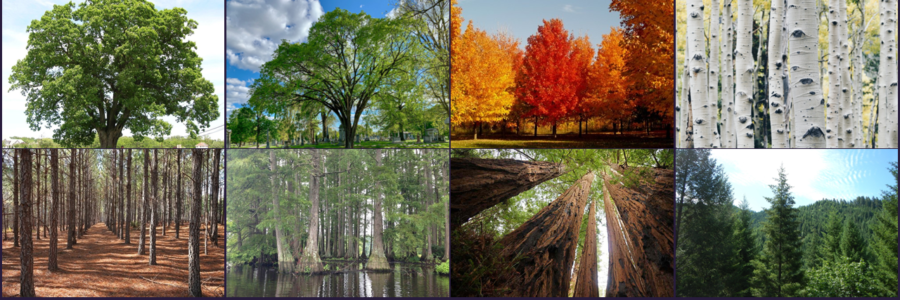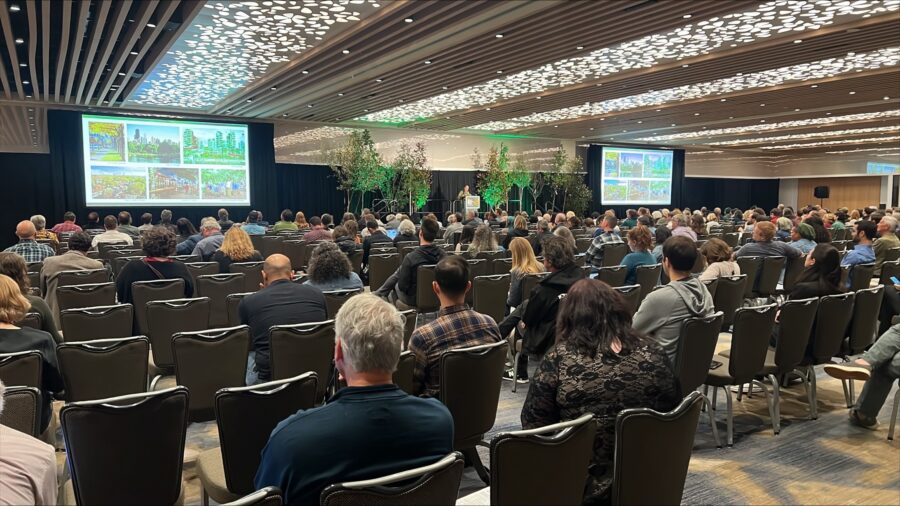By Kevin O’Hara
2021 was a big year for trees. The last 12 months have seen the public, private, and NGO sectors work together to make dramatic steps forward on climate and equity goals, centering trees as a critical part of the solution. 1t.org and 1t.org US are proud to bring our radically inclusive approach to help catalyze this progress. So, without further ado, here are the top five wins for trees this year.
Social Share: “The past year was a good one for trees. Here are the top 5 ways trees came out strong as a critical natural climate solution in 2021. #ConserveRestoreGrow #TrillionTrees bit.ly/30vIoW1 @1t_org_US”
1. Unprecedented federal investment in forests and trees. As part of the historic infrastructure bill, the U.S. government will invest $8.6 billion in trees and nature-based infrastructure, including:
• REPLANT Act which raises the cap on investment in protecting national forests.
• $5.16 billion for hazardous fuels reduction and vegetation management.
• $2.57 billion for post-fire recovery and burned area rehabilitation.
• $1.5 billion for state and private forest restoration.
• $490 million in natural infrastructure resilience.
• $460 million for wood innovation.
• $200 million to reforest abandoned mineland.
• $200 million to fund national seed and seedling strategy.
• $200 million for tribal forest restoration priorities.
• $100 million to the Collaborative Forest Landscape Restoration Program.
2. International focus on the centrality of forests and nature in fighting climate change. COP26 in Glasgow was affectionately dubbed Nature’s COP. Forests and nature-based solutions were everywhere and it wasn’t just tongue wagging. Over 140 countries pledged to end deforestation at COP26. The private sector showed up for forests, as well, by launching the Forest Positive Coalition of Action, and pledging a total of $19.2 billion to halt and restore forest loss.
Additionally, COP26 brought a landmark agreement on carbon markets which will allow private capital to support conserving, restoring and growing forests around the world. This was the first COP to recognize and advance the role of Indigenous Peoples and local communities (IPLC) as guardians of forests and nature through climate finance. We saw $1.7 billion pledged in support of Indigenous and local communities’ land tenure.
Outside of COP26, we also saw an increase in funding for forests, including $300 million committed by Marc and Lynn Benioff.
3. The world started to recognize the importance of tree equity. Perhaps, this was stated most eloquently in an op-ed in the Washington Post by Max Jordan Nguemeni Tiako and Eugenia C. South titled, “Don’t mock ‘tree equity.’ It has health benefits.” The authors share the profound influence trees (and lack thereof) have on our lives and physical and mental well-being. Additionally, a feature in the New York Times authored by Ian Leahy laid out the disparities between communities with trees and those without. Low-income communities as well as Black communities (many historically affected by redlining) both lack trees when compared to wealthier or predominantly white communities.
This recognition pairs with new tools released this year like American Forests’ Tree Equity Score as well as commitments from local governments like Phoenix, Arizona which became the first city to make a commitment to tree equity for all residents.
4. The US House of Representatives passed the Build Back Better Act which if passed by the Senate will provide over $30 billion in climate-smart forestry investments – the largest investment in trees and forests ever by the U.S. government:
• $19 billion to protect communities against devastating wildfires.
• $2.83 billion for urban and community forestry, including tree equity grants to increase urban tree canopy.
• $2.7 billion for integrating trees in agriculture through USDA programs for farmers.
• $1.25 billion for the Forest Legacy Program to permanently preserve more than 1.8 million acres.
• $1.25 billion in incentives for private landowners to implement climate-smart forestry on their land.
• Billions to stand up a Civilian Climate Corps to put people to work planting, maintaining and restoring forests.
• $780 million for wood innovation grants.
• $450 million for post-fire recovery and to replant forests.
5. Last, but not least, 45 US-based entities joined the trillion trees movement. In 2021, 1t.org US welcomed 45 organizations, NGOs and governments. Thanks to those who joined us this year, we now have 86 pledges who have collectively pledged to conserve, restore and grow 50.8 billion trees by 2030.
As we embark on 2022, we look forward to supporting the implementation of the ambitious commitments made and furthering our progress towards the one trillion trees goal to benefit people and planet. You can join us by making a pledge or helping another entity make the pledge. Together, we can reach this goal!



